Prized for their delicious and unique flavors, there are some subtle differences between a cherimoya vs soursop. Both belonging to the same plant family, there are many undeniable similarities between these two trees, especially when comparing their juicy and delicious fruit. But what might the differences be between these trees, leading to their distinct species classifications?
In this article, we will compare and contrast cherimoya with soursop so that you can fully understand the differences between them. We will go over their unique plant classifications as well as what these plants both look like. Finally, we will address how these trees grow best as well as what the fruits of these trees taste like. Let’s get started now!
Comparing Cherimoya vs Soursop
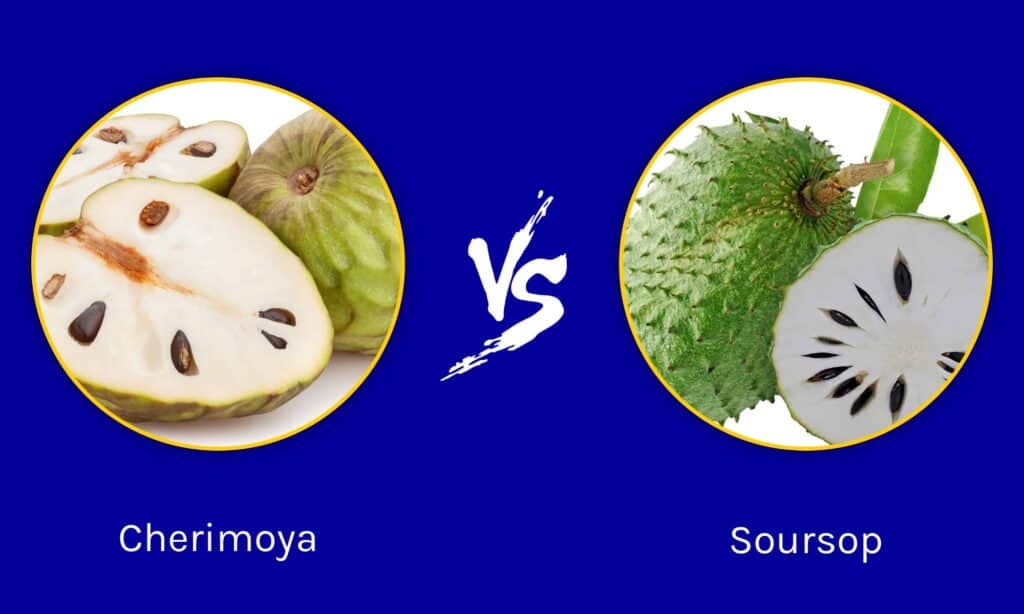
A-Z-Animals.com
Key Differences Between Cherimoya vs Soursop
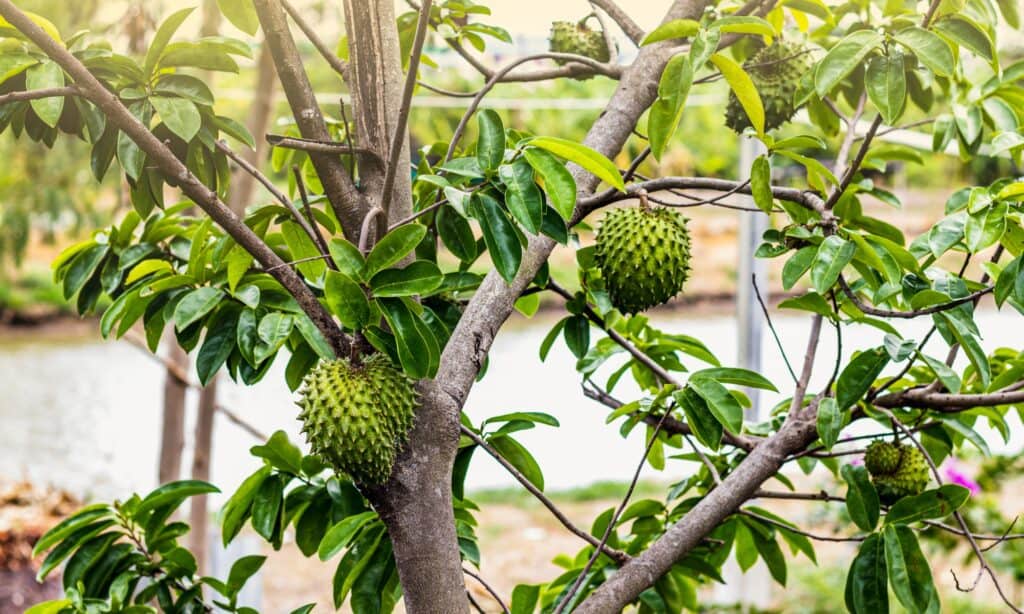
iStock.com/Raywatt Jhantarangura
There are a number of key differences between cherimoya and soursop. For example, the cherimoya tree has hairy leaves, while the soursop tree has glossy leaves. In addition, soursop fruit is oval shaped, while cherimoya fruit is heart shaped. The cherimoya fruit weighs less on average compared to the soursop fruit. Finally, soursop tastes more sour and citrusy compared to the sweet and nuanced taste of cherimoya fruit.
Let’s go over all of these differences in more detail now.
Cherimoya vs Soursop: Classification
There are some definite similarities between cherimoya and soursop, given their relation to one another. However, they are classified differently, both distinct species from each other despite belonging to the same plant family and genus. Members of the Annonaceae family, cherimoya is classified as Annona cherimola, while soursop is classified as Annona muricata.
Cherimoya vs Soursop: Description
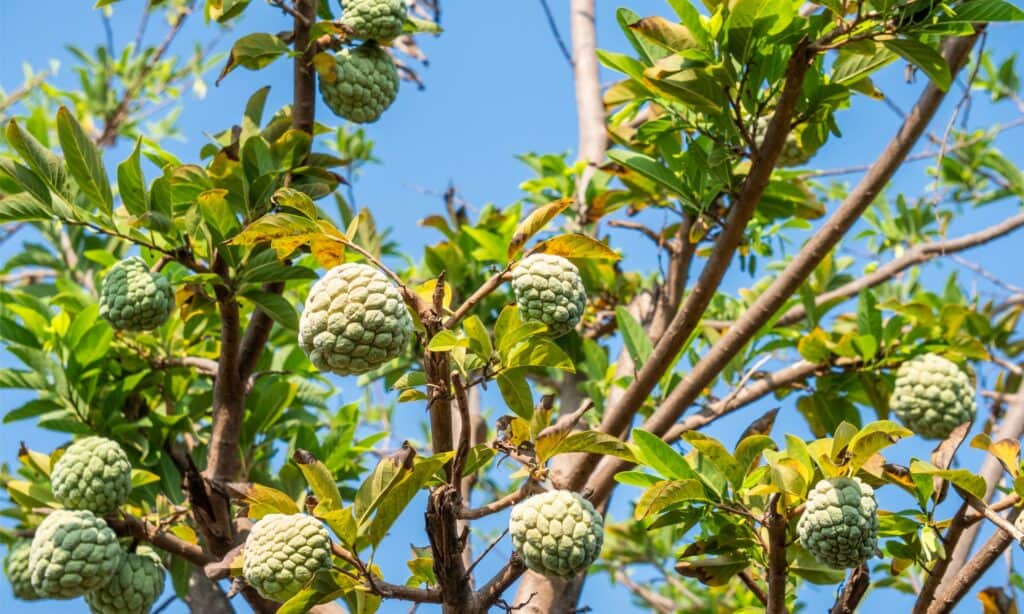
iStock.com/powerbeephoto
Both cherimoya and soursop trees grow similarly to one another, given their closely linked species. They both reach up to 30 feet tall in proper growing conditions, and they both have unique flowers and fruits. However, most cherimoya trees produce hairy leaves, while soursop leaves are typically glossy and smooth. The branches on both of these trees are hairy, often losing their hair and producing more sap as they age.
Soursop trees produce flowers in a light yellow color, while cherimoya trees produce light green flowers. These flowers produce fruits on both trees, though soursop fruits are typically larger than cherimoya fruits. In addition to this, soursop fruits are oval shaped and covered in spines, while cherimoya fruits are heart shaped and covered in unique scales. Both fruits are white and fleshy inside, though the exterior of most soursop fruits are darker green compared to the exterior of cherimoya fruits.
Cherimoya vs Soursop: Uses
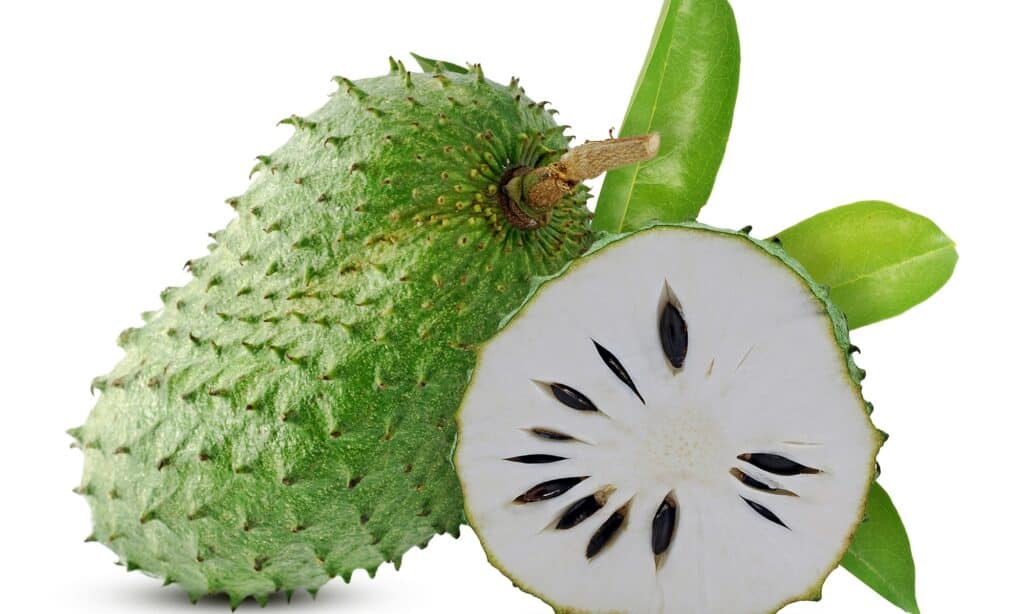
iStock.com/Photographer
Soursop and cherimoya are prized for their edible fruits, and this is the primary use for both of these tropical trees. However, cherimoya trees produce fragrant blooms and are fast growing, making them ideal for ornamental purposes compared to the primarily agricultural soursop tree. In addition to this, soursop leaves are often used in a medicinal capacity, while cherimoya leaves are not.
Cherimoya vs Soursop: Origin and How to Grow
The exact origins of the cherimoya and soursop trees are relatively unknown. However, many experts place the cherimoya tree as native to Ecuador and Peru, while the soursop tree is native to the Caribbean and tropical America. When it comes to growing either of these trees, full sun is a must, as well as nutritious soil. However, soursop is less cold hardy compared to cherimoya trees, so this is something to keep in mind should you be interested in growing either plant!
Cherimoya vs Soursop: Flavor and Taste
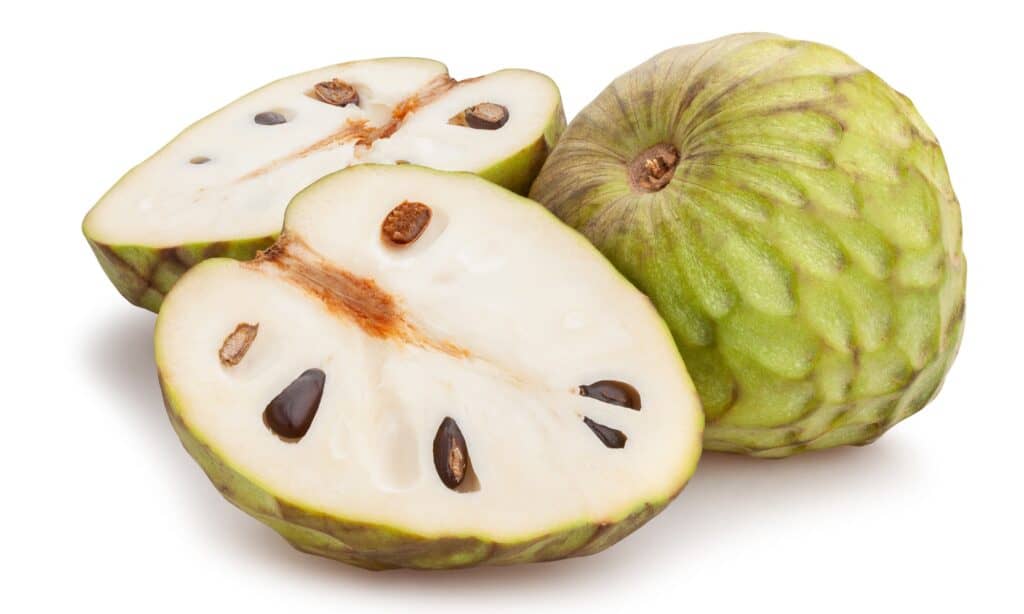
iStock.com/bergamont
A final difference between cherimoya and soursop lies in the taste and flavor profiles of their fruit. For example, cherimoya fruit is mild and sweet in flavor compared to the citrusy and sour flavor of the aptly-named soursop. Both of these fruits have delicate flesh and consistency, but soursop fruits have a creamier texture compared to cherimoya fruit.
The post Cherimoya vs Soursop: Is There a Difference? appeared first on AZ Animals.
from Animal News, Facts, Rankings, and More! - AZ Animals https://ift.tt/YCmgTlA